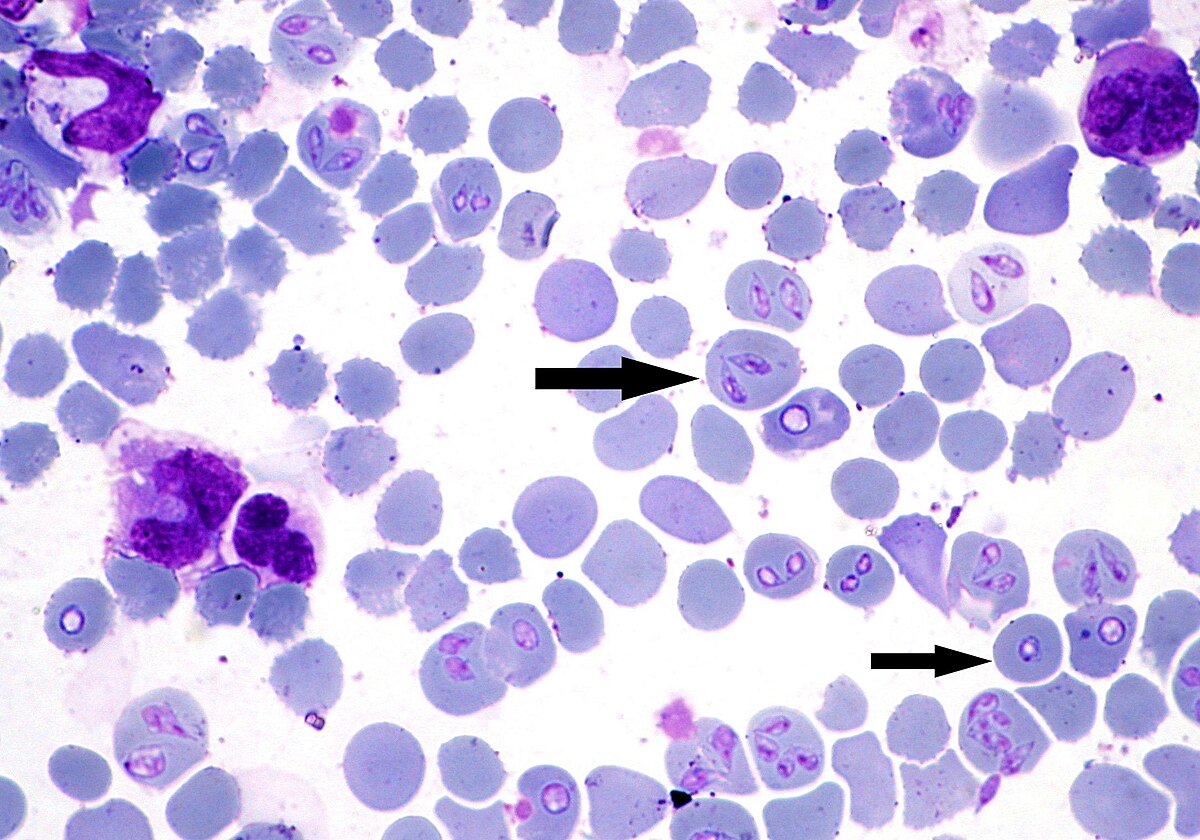B. canis
Introduction
- This species occurs in erythrocyte of dogs.
Morphology
- These are large form of piroplasms.
- Pyriform in shape, pointed at one end and rounded at other end.
- Frequently, there is vacuole in cytoplasm.
- Pyriform forms may lie at an angle to one another.

Lifecycle
- Mostly stage to stage transmission occurs through Rhipicephalous sanguineus throughout world.
- Other ticks: Dermacenter, Hemaphysalis, Hyalomma.

Pathogenesis
- Both young and old dogs are susceptible.
- Incubation period: 10-20 days
- Fever (38.9-40.6 0C) is first sign. It is soon followed by marked anemia, Icterus inappetence, marked thirst, weakness, prostation and often death.
- Hemoglobinuria is seen in some acute cases.
- Anemia, Emaciation, Irregular temperature, Irregular appetite in chronic case.
Diagnosis
- On the basis of clinical signs and history
- Demonstration of organisms in blood animals.
- Immunodiagnostic test such as CFT, LFA and CHA may be useful.
Treatment
- Trypan blue is effective. Single IV injection of 4-5 ml of 1% solution is effective for average sized dog.
- Phenamidine @10 ml of 5% solution/kg body weight S/C in single dose. This is repeated after day.
- Quinotronium sukphate @0.05 mg/kg body weight S/C, repeat dose after day.
- Dogs recovered remain immune.